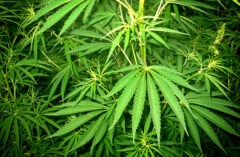Table of Contents
Last Updated on April 20, 2023 by Team Spinfuel
Weed. It’s been illegal for a long time. In America since the nineteen thirties. In most parts of Europe, soon after that. Especially in France. All over the world, you can find unnecessarily harsh penalties for the use of cannabis, or the hemp flower.
It’s a shame, because ‘weed’ as we know it comes from the Hemp plant. What people forget in the madness of reefer prohibition is that the hemp plant is a gift of nature with many practical and beneficial uses. The hemp plant has actually been utilized by human cultures and civilization for centuries. No, millenia! It’s even in the bible.
2018 Hemp Act
Since then, strides have been slowly made, moving the hemp industry forward. The U.S. government legalized Hemp in the 2018 Farm Act, clearing the way for production of CBD relief for ailments both specific and over the counter. Not to mention food, beauty products and a host of other purposes. It’s a good time to learn a little more about the history of hemp, or hempstory.
The Original Strain of the Hemp Flower
The research all pretty much concurs that hemp first flourished in Asia. Archaeological digs in Japan guesstimate that hemp was harvested as far back as ten thousand years, or ten millenniums ago. Specifically, cannabis achenes were excavated in the Oki Islands, dating back to eight thousand B.C. Eight thousand plus two thousand equals ten thousand!
Hemp is considered to be probably one of the earliest plants to have been cultivated and fibers from the hemp plant were used for cloth before agriculture was even a thing. During the Neolithic period in China hemp fibers were used in pottery making. Evidence exists that during this period, hemp grew throughout Eastern European territories like Austria, Romania and Ukraine and in East Asia in places like Tibet. That explains the monks!
Ancient Records
Ancient figures also mention hemp in their records. The mythical Chinese Emperor Shennong recommended drinking hemp tea in his book ‘Ben Cao Jing’ and used the plant to heal ailments such as gout and memory loss. Go figure – memory loss, a stereotype typically associated with cannabis. His book is dated from approximately 200 B.C, adapted from oral traditions – meaning the memory loss treatment was pretty effective.
The Greek historian Herotodus mentions the use of the hemp plant in his records of Scythia, an ancient territory in what was once ‘Eurasia’. He claims Scythians would inhale the vapors from hemp seeds in a kind of steam bath, both for their own pleasure and for healing.
In the Hindu religion, hemp was revered as far back as the second century B.C. and referred to by followers as ‘the sacred grass. It was considered a heavenly gift.
There even exists evidence that the anointing oil which God commanded Moses to whip up featured hemp as an ingredient! Let my people smooooke.
The Hemp Flower After Christ
The cultivation and use of the hemp plant continued spreading across Europe in the new millennium. The Middle Ages were a period of advances in agriculture and technology. Not the kind we think of today when we hear the word technology, but technology nonetheless.
Hemp began serving a greater number of purposes, as the human race discovered how many diverse applications the plant possesses. During this period, hemp came into demand for paper production, shipping and textiles.
Tenth Century
In the tenth century, Hildegard Van Bilden declared hemp seeds digestible in her seminal work ‘Nature Studies’ and hemp became a staple of cuisine in Italy and Germany, primarily in soup or as filling for baked goods. Apparently, things haven’t changed much: CBD brownie, anyone?
It is believed that the sails of the Nina, Pinta and Santa Maria were fortified with hemp fibers. Thusly, King Henry the Eighth enacted a decree in 1533 that required cultivation of the plant, at risk of fines, in order to recognize the contribution it made to the economy.
Another royal ruler who backed hemp was King John IV of Portugal. In the fifteenth century he founded the Royal Linen and Hemp Factory to help revitalize his naval fleet. By then, Portugal had been manufacturing hemp for use in ropes and ships for over two hundred years.
And hemp isn’t just in the Bible, it is the bible! Or at least, one version. Johanes Gutenberg, the father of the printing revolution in Europe, printed the Gutenberg Bible using hemp fibers. So they would stand the test of time, as hemp paper is more durable.
Hemp Flower In The Americas
The Hemp Flower made its way to Latin America via – big surprise – colonization! Hemp was introduced by the Spaniards, who tried cultivating it in Colombia, Mexico and Peru but were ultimately successful in Chile. A tradition that continues today, with Chile being one of the world’s leaders in legalization reform.
Hemp really took off in North America before the American Revolution. You could say that America’s founding fathers held the hemp plant in high esteem. In the beginning of the sixteen hundreds, early settlers discovered for themselves that hemp made great paper, ropes, clothes, shoes and food. Something the Native Americans had known for a while.
The 1700’s
By the seventeen hundreds, America’s first president George Washington himself was encouraging the young nation to grow hemp and even wrote about it in his diary.
Washington wasn’t the only American president to rally for hemp. The Bible isn’t the only historically significant document to utilize strong hemp fiber. It is said that Jefferson wrote his draft of the Declaration of Independence on hemp paper, along with the first two drafts of the U.S. Constitution.
During this period, Congress passed acts requiring farmers to grow hemp. It is also reported that Abraham Lincoln used hemp seed oil to light his household lamps. Even the puritans grew it! Rumor has it royalty reaped the plant’s benefits too, with Queen Victoria using hemp for menstrual relief.
As late as 1916, the United States Department Of Agriculture was officially recognizing that hemp produces four times as much paper per acre as paper made from trees. But…
It’s All Down Hemp From There
In 1937, U.S. Congress passed the notorious Marihuana Tax Act, effectively prohibiting cannabis commerce. This came after years of manipulating information about the plant with the purpose of demonizing Mexican immigrants. Legend has it that rich and powerful families lobbied for the law to protect their profits from other industries which were threatened by hemp’s versatility.
Hemp Flower For Victory
Conspiracy theories aside, the U.S. government continued to advocate and encourage the cultivation of hemp as they recognized that the plant provided strong materials which were needed to win the war. There was even a government-sponsored film produced to spread the word, called ‘Hemp For Victory’.
Ironically, prior to the war, the U.S. had been getting hemp supply from Indonesia and The Philippines, but Japan cut off the supply lines, so the country was forced to rekindle domestic production. Fun Fact! In 1942, the innovative Henry Ford built a car body from hemp fibers that was ten times stronger than steel.
Post War Years
In the postwar years, the anti-hemp crusades continued. Cannabis was deemed illegal by many countries around the world, in many cases based on pressure from the United States Government. The last domestic U.S. commercial hemp field was planted in 1957, in Wisconsin.
Then came some notable breakthroughs, scientifically and legally. In 1963 and 1964, Dr. Raphael Mechoolam identified CBD and was able to separate it from THC, thus enabling the hemp plant to be considered separately from all the anti-marijuana hysteria.
Then in 1978, New Mexico passed a law recognizing the therapeutic benefits of CBD. Soon after, CBD’s value in treating epilepsy was studied and accepted. This led to the 1996 California Compassionate Use Act, which legalized cannabis for medical treatment.
Hemp Flower For Today
The human race is just starting to come to their senses about the value of the hemp plant, moving forward by moving backwards. Surely the world is on the road to receiving the many benefits of nature’s gift, the hemp plant.
Further Reading:
50 States, So Where is Cannabis Legal in the United States?
Is Growing Cannabis In Ohio Legal?
How Is Good Commercial Cannabis Grown?








